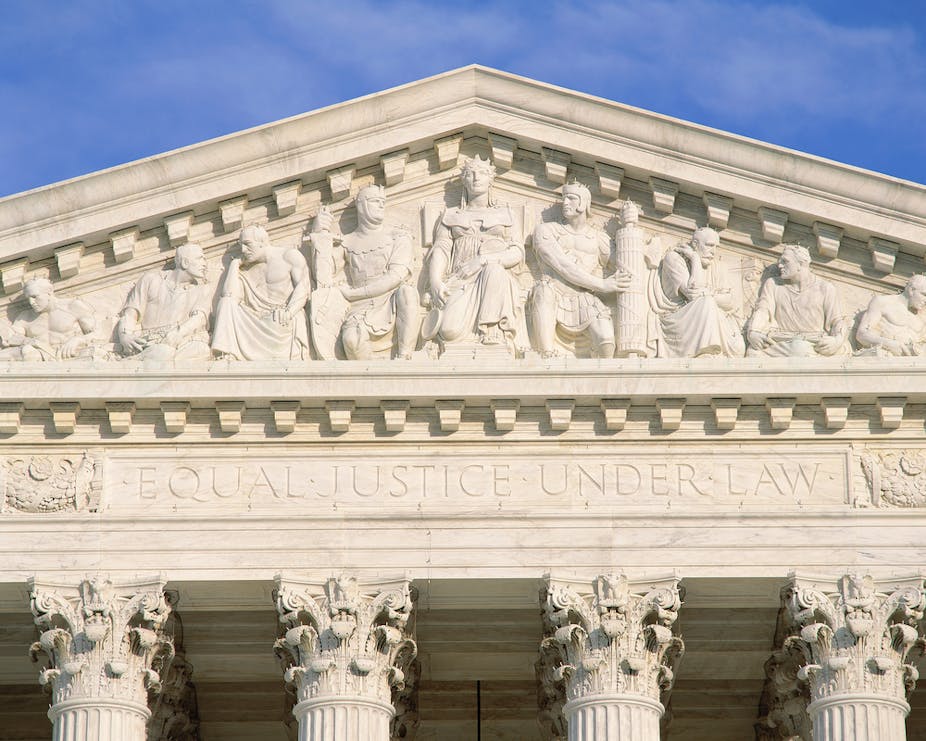All nine members of the US Supreme Court have ruled that isolated genetic material cannot be patented – unless the material is markedly different to what exists in nature.
The court ruled against Myriad Genetics’ patents on the BRCA1 and BRCA2 genes, which are linked to breast and ovarian cancer. The primary plaintiff was the Association for Molecular Pathology, although the case was brought on behalf of a range of other stakeholders including medical associations, and breast cancer and women’s health groups.
The US decision may impact on the impending appeal in an Australian in which a Federal Court judge ruled patent claims to isolated genetic sequences were valid.
The US decision
The Association for Molecular Pathology argued that patent claims to “isolated” genomic DNA were not eligible for patent protection because they are products of nature. It is a fundamental tenet of modern patent law that natural phenomena and products of nature cannot be patented. Products of nature are reserved as the basic tools of scientific and technological work.
In the United States, the legal test that courts apply to determine whether a patent claim is a product of nature or not, is that the invention has “markedly different characteristics from any found in nature”.
In a quite simple judgement, the Supreme Court emphasised that brilliant discoveries may not receive patent protection because they are laws of nature. Albert Einsteins’ formulation E=mc2 (the finding that energy and mass are different forms of the same thing) is a good example.
In this case, the Supreme Court stated that Myriad Genetics Inc did not invent genomic sequence, they only isolated it.
Previous cases on the same gene patents in the United States held that to isolate genomic DNA, chemical bonds were broken and this was sufficient to make the isolated genomic DNA “markedly different” from that in nature. The Supreme Court acknowledged bonds had been broken, but focused on the information content of the material (the genomic sequence) because that was the focus of the patent claims.
The Supreme Court did hint that artificially changing genomic DNA sequences may be sufficient to make isolated DNA markedly different from that in nature. Moreover, it stated that [cDNA](http://en.wikipedia.org/wiki/Complementary_DNA](http://en.wikipedia.org/wiki/Complementary_DNA), a laboratory-made form of (synthetic) DNA, that has very little chemical resemblance to what is found in nature, was patent eligible.
What does it mean for Australians?
The appeal in the Australian case will be heard by all three judges of the Full Federal Court on August 7 and 8. While the US case does not create a direct precedent, important elements of the case are the same and will have an impact. The test of patentability in Australia is similar to that in the United States, and the cases are about the same patents held by the same company.
Still, patents are territorial by design. This means that US patent law does not directly affect Australian patent law. In Australia, the legal test to determine whether a claim in a patent is a law of nature or not is whether it’s an “artificially created state of affairs”.
This is probably a lower threshold test than the US test. In the recent Australia case over Myriad’s BRCA1 patent, the court was satisfied that the test was met by isolating genomic DNA outside of a cell.
This is slightly different rationale to that applied by the US Supreme Court. While arguments citing the US Supreme Court decision will most likely be made in the Australian appeal case before for the full bench of the Federal Court later, the decision is not binding on Australian courts.

